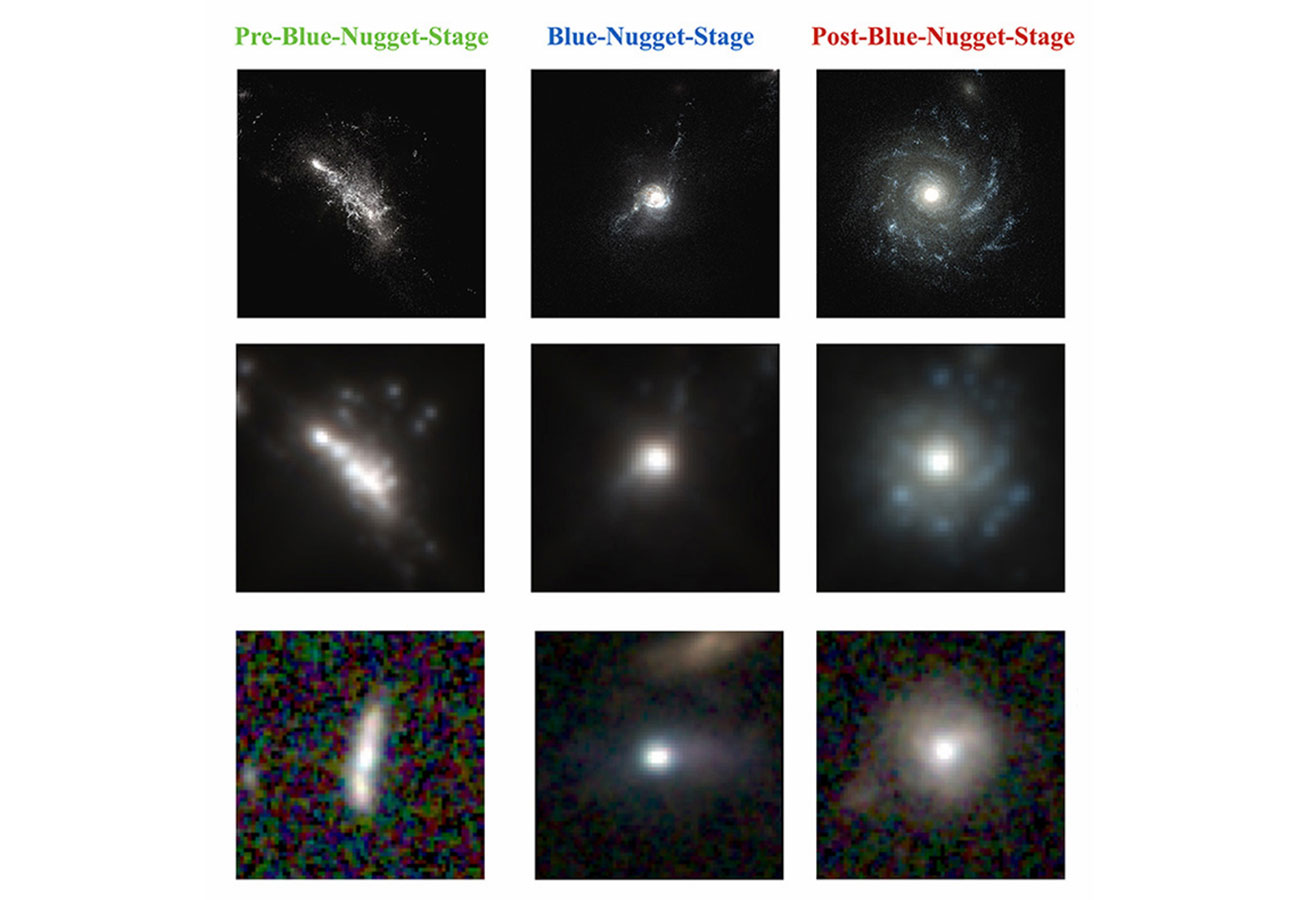Face recognition for galaxies: Artificial intelligence brings new tools to astronomy
Published Tuesday April 24, 2018
A machine learning method called “deep learning,” which has been widely used in face recognition and other image and speech-recognition applications, has shown promise in helping astronomers analyze images of galaxies and understand how they form and evolve.
In a new study, accepted for publication in Astrophysical Journal and available online, researchers used computer simulations of galaxy formation to train a deep learning algorithm, which then proved surprisingly good at analyzing images of galaxies from the Hubble Space Telescope.
In the image above, the top row are high resolution renderings from a state-of-the-art galaxy simulation program (VELA). The second row are the same images from row 1 but modified to more closely resemble what would be observed by the Hubble optical systems; these images were used to train the neural network. The bottom row are Hubble galaxy photos correctly classified using the deep learning system developed by the researchers. Read the entire post by author Tim Stephens here.
This is yet another example where artificially-created data has been shown to be very effective for training machine learning systems. Deep Vision Data, a division of Kinetic Vision, specializes in the creation of synthetic training data for deep learning applications in the healthcare, aerospace, automotive, consumer packaged goods, oil and gas, industrial and manufacturing markets.

